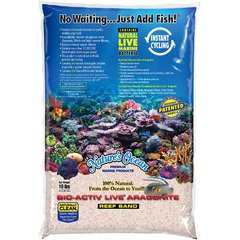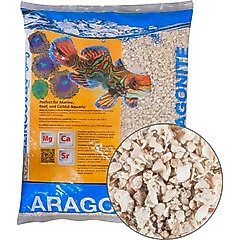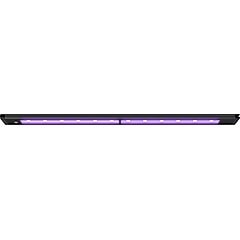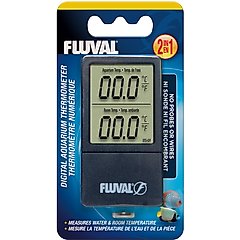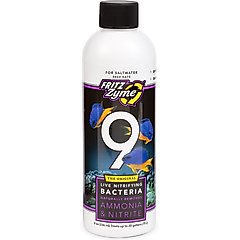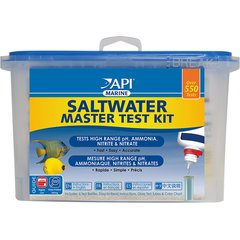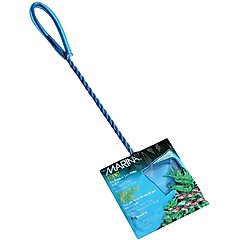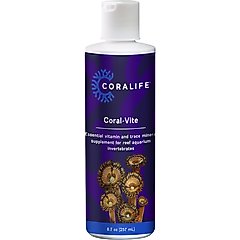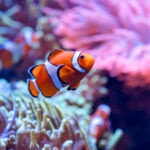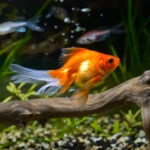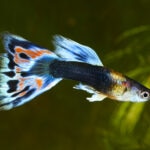How To Set Up a Reef Aquarium
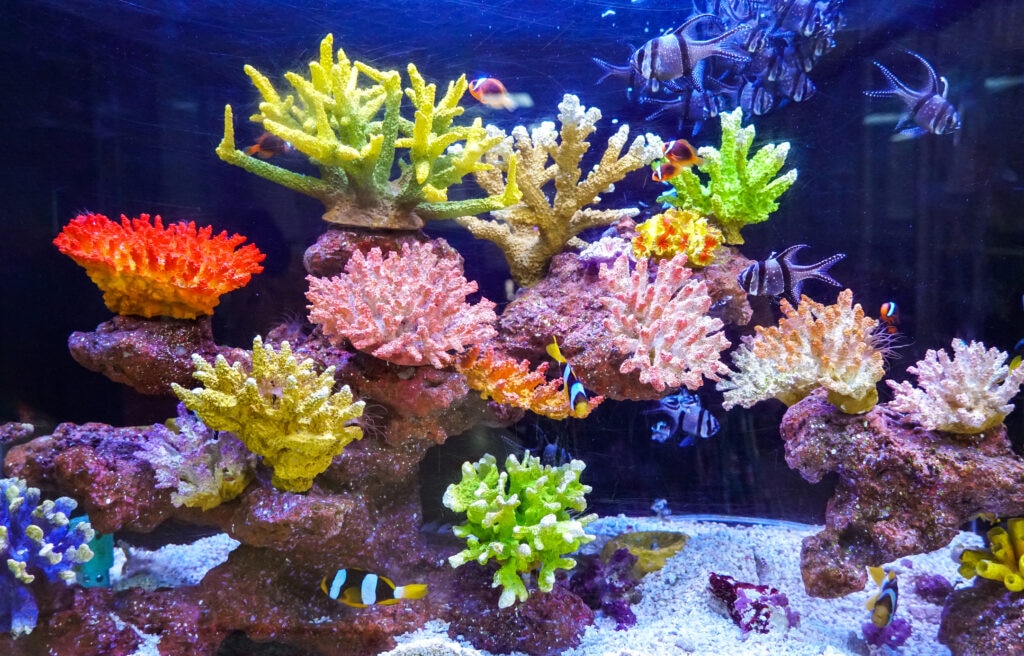
Photo by SandyHappy/iStock/Getty Images Plus
Colorful and captivating, reef aquariums are as beautiful as they are fascinating. These saltwater aquariums mimic natural coral reefs, complete with colorful live corals, flashy fish, and interesting invertebrates.
Having your own oceanic ecosystem does come with a learning curve, however. Compared to their freshwater counterparts, reef aquariums require more specialized knowledge, equipment, and maintenance.
Key Takeaways
- Reef aquariums can feature not only colorful fish but also corals and invertebrates.
- A 40- to 60-gallon tank is typically best for beginner reef aquarium hobbyists.
- When starting a reef tank, add fish first, then invertebrates, then corals.
- Make sure to cycle your tank properly when adding new aquatic life.
Planning Your Reef Tank
As beautiful as they are, even the most basic of beginner saltwater tanks require quite a bit of know-how and support.
“You need to research and learn a lot before starting in the hobby to be successful,” says Matthew Lucero, a manager at Bulk Reef Supply in Golden Valley, Minnesota. “Having access to mentors or peers is also a big part, as the saltwater hobby is a lot smaller than the freshwater hobby.”
Once you’ve done your homework, consider the following when setting up a reef tank aquarium:
Choosing a Tank Size
Reef tanks vary widely in size, from specialized nano tanks under 40 gallons to custom-built tanks that hold over 1,000 gallons.
In general, a 40- to 60-gallon tank is ideal for beginners, as larger tanks are more stable because of the increased volume of water.
Types of Fish
If you’re new to reef aquariums, you’re in luck. Plenty of low-maintenance saltwater fish can make beautiful additions to your tank.
“Clownfish and gobies are great for beginners,” says Lucero. Firefish and royal grammas are also hardy and low-maintenance options.
Types of Coral
Coral plays a critical role in reef tank aquariums, helping to balance nutrients and providing shelter for fish.
Some corals require more maintenance than others, so be sure to choose beginner-friendly varieties if you’re new to saltwater tanks.
“Soft corals are great beginner corals,” says Lucero. “Personally, I like zoanthids, as they are easy [to care for] and colorful.”
Types of Invertebrates
Reef tanks rely on a “clean-up” crew of invertebrates that eat algae, leftover food, fish waste, and other unwanted materials.
Lucero recommends marine hermit crabs and snails for hobbyists just getting started.
Must-Have Reef Aquarium Supplies
Your marine reef tank setup requires the following supplies:
- Tank: Choose a tank that’s the correct size and shape for your space. Saltwater and freshwater aquariums differ in their equipment, but the tanks are standard.
- Filters: There are many options for filtering your marine tank. Choose a filter (or combination of filters) that allows for good biological, mechanical, and chemical filtration, as well as a protein skimmer.
- Substrate: Sand, like Nature’s Ocean Bio-Activ Live Aragonite Saltwater Aquarium Sand, and crushed coral, like CaribSea Aragonite Florida Aquarium Crushed Coral, are typically used as substrates in reef aquariums.
Recommended Products
- Lighting: Lighting is especially important in reef aquariums to support the needs of the corals. Full-spectrum LED lighting, like the Aquaillumination Blade Smart Coral Glow LED Strip, is usually recommended due to user-friendliness and efficiency.
Recommended Product
- Heater and thermometer: You’ll need a heater to maintain a steady temperature (usually 75–78 F for reef tanks). Even with a built-in thermostat, get an extra thermometer, like the Fluval Digital Thermometer, to ensure accuracy.
Recommended Product
- Live rock: Live rock is rock that has already been colonized with beneficial aquarium bacteria. Live rock provides an ideal environment for your coral to grow and provides much of the biological filtration in a reef tank.
- Salt mix: This dry blend of chemicals replicates natural sea water when added to purified water.
- RO/DI unit: Water purity is especially critical for reef aquariums. Consider purchasing a RO/DI (reverse osmosis/deionization) unit that removes impurities from tap water. If you do not get one of these units you’ll need to purchase RO/DI water.
- Refractometer: This tool measures the salinity of your aquarium’s water.
- Coral glue: A specialized adhesive for attaching coral to rocks.
- Net: For safely transporting new fish.
Setting Up a Reef Aquarium
First, set your fish up for success by carefully installing and filling the aquarium.
1. Add Substrate and Rock
Place your rocks on the bottom of the tank before you add substrate. Fish often dig, and if you place the rocks on the substrate they can shift and fall, potentially cracking your tank.
Ensure there are places for your fish to hide, as well as areas of open water for unobstructed swimming.
If you are using an inert substrate , thoroughly rinse it under running water until it runs clear, removing any dust or debris. If you are using a bioactive substrate that has been seeded with beneficial bacteria do not rinse it, as this will kill the bacteria.
2. Install the Equipment
Make sure your filter, heater, lights, and wavemaker are properly sized for your tank. The size and shape of your tank will determine placement, and installation varies depending on the specific product.
Always read the manuals and fine-tune this initial set-up before adding anything else to your aquarium.
3. Fill with Saltwater
Outside of the tank—using clean, new containers—combine your RO/DI water and aquarium salt mix.
Once mixed, use a refractometer (calibrated to the manufacturer’s instructions) to check the salinity. Typically, the desired salinity for a reef tank is 35ppt. Make sure the temperature (about 78 F) and pH (8.3) are correct as well.
Place a plate on the substrate and slowly pour the water onto the plate to avoid disturbing the substrate or rocks.
4. Cycle the Tank
The nitrogen cycle is a biological process where beneficial bacteria transform harmful ammonia (which is produced by decaying plants, leftover food, and fish waste) into less toxic nitrate.
A newly set up aquarium must complete the nitrogen cycle to establish a healthy bacteria colony before adding fish. Skipping this step can lead to new tank syndrome, a common problem where ammonia levels become dangerously high.
In saltwater tanks, using a live rock from an established tank can speed up the cycling process and help establish a healthy bacteria colony. There are also many options to add beneficial bacteria to your tank to speed up the process and minimize stress on the fish, such as Fritz Nitrifying Bacteria.
Recommended Product
For best results, track ammonia, nitrite, and nitrate levels with a test kit, like the API Saltwater Aquarium Master Test Kit, to monitor the levels.
Recommended Product
Be patient! It can take four to eight weeks for a reef aquarium to fully cycle. But the timer doesn’t start until you have aquarium livestock in the tank; the beneficial bacteria must have ammonia as a food source before their numbers grow.
How To Introduce Fish and Coral
Now, it’s time for the fun part: adding your fish, coral, and invertebrates! It’s important to add your new tank inhabitants in proper order to make the transition as safe as possible.
Add Fish First
Start cycling your tank with hardy fish such as tank-raised clownfish.
Place the sealed plastic transport bags in the aquarium and allow them to float for 15 minutes to acclimate your fish to the tank temperature.
Then, slowly drip water from the aquarium into the bag using tubing. Do this until the bag’s volume doubles in size, in around an hour.
Using a net, like the Marina Fine Blue Nylon Net with Handle, gently transfer the fish one by one to the container. Do not dump the water from the transport bag, as it may be contaminated.
Recommended Product
Add Invertebrates
Next is the “clean-up crew.” Invertebrates should be added to the tank shortly after the fish to clean up any algae, which could bloom and lead to new tank syndrome.
Most invertebrates are more sensitive to ammonia and other dissolved nitrogen products, so wait until your tank is stable to add them.
Introduce Coral
Finally, it’s time for the corals. Corals are the most sensitive to ammonia and fluctuations in water parameters, so make sure your tank is completely cycled before adding them.
To acclimate your coral to the water temperature, place the sealed plastic transport bags in the aquarium and allow them to float for 15 minutes. Then, remove any debris from the rock where you intend to place the coral.
Apply a small drop of coral glue to the base of your coral and press it firmly onto the rock to secure it.
What Does Reef Tank Maintenance Look Like?
Reef tanks require more maintenance than freshwater tanks. Plan to do the following to keep your tank happy, healthy, and beautiful:
- Water testing: Once a week, check the salinity, specific gravity, pH, alkalinity, ammonia, nitrite, and nitrate levels in your tank.
- Water changes: Plan to change your aquarium’s water around once a week, replacing about 10% of the water each time, or about 20% every other week. As time goes on and the tank’s ecosystem is established, you may not need to change water as frequently.
- Coral care: Corals may benefit from calcium and trace mineral supplements, such as the Coral-Vite Supplement. When corals are healthy and growing quickly some types may need to be cut back, especially more aggressive types that are prone to stinging their neighbors.
Recommended Product
- Cleaning: Regularly remove algae buildup on the glass with a scraper and gently vacuum the substrate to remove waste and uneaten food, being careful not to disturb your invertebrates or coral. Filters and other equipment should be cleaned according to the manufacturer’s instructions.
FAQs About Reef Aquarium Setup
Should you put rock or sand first in a reef tank?
Rock should always go in first, as it can shift and potentially topple over if it’s placed on the sand instead of on the tank bottom.
Are reef tanks hard to keep?
Reef tanks do require more work than a freshwater tank. You’ll need to mix up saltwater for water changes ahead of time, provide more filtration than most freshwater set-ups, and monitor more water parameters. While reef tanks require more work than freshwater tanks the results can be spectacular, with a slice of a coral reef in your home.
Where should corals be placed in a reef tank?
This depends on the type of coral and the type of light. Low-light corals can be lower in the tank, while high-light corals should be placed higher in the tank. This may involve trial and error to find the spot in your tank where the coral is happiest.
Can you have too many corals in a tank?
Yes. Some corals fight for territory and will sting their neighbors to make more room to grow. Make sure your corals are spaced out in the tank, not touching each other, and with enough room to grow around them.
What is the best beginner coral?
Many soft corals are more forgiving than large-polyp or small-polyp stony corals. Zoanthids are beautiful and easy to grow; in fact they can grow so much that they must be trimmed or they can take over the tank. Leather corals aren’t as flashy, but they are very hardy and a larger centerpiece type.
